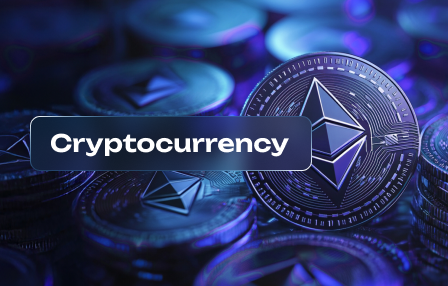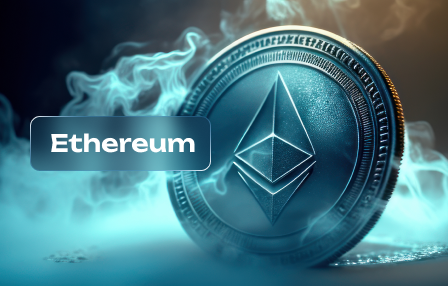Rypto in 2025 – What’s Coming Next?
May 4, 2025
Investors should closely monitor the rising integration of technology within crypto, as advancements in blockchain and decentralized finance (DeFi) are set to redefine investment strategies. By 2025, innovations such as layer-2 scaling solutions and cross-chain interoperability will enhance transaction speeds and reduce costs, making crypto assets more appealing for mainstream adoption.
The trends in regulatory frameworks will also play a pivotal role in shaping the future of investments. Governments around the world are moving towards clearer regulations that could facilitate greater institutional participation. Staying informed about these regulations can provide valuable insights for strategic positioning within this evolving market.
A deeper analysis of consumer behavior suggests that user-friendly platforms and educational initiatives will drive broader adoption. As more individuals gain access to crypto through simplified interfaces and comprehensive resources, expect significant growth in retail investment volumes. Understanding these shifts will be crucial for capitalizing on emerging opportunities.
The intersection of finance with emerging technologies promises continued innovation. Projects focusing on sustainability, privacy, and tokenization of real-world assets are likely to attract attention. Investors should evaluate these developments critically to identify potential high-impact ventures that align with future market demands.
Decentralized Finance Innovations
The evolution of Decentralized Finance (DeFi) is set to redefine investment strategies and market dynamics by 2025. Key innovations will focus on enhancing user experience, optimizing liquidity, and integrating with traditional financial systems.
One significant trend is the rise of automated market makers (AMMs) that leverage advanced algorithms for better price discovery. These technologies will promote higher adoption rates among retail investors as they offer reduced slippage and more efficient trading mechanisms. Projects focusing on improving AMM protocols are likely to attract substantial investments.
Interoperability solutions will play a critical role in connecting various blockchain networks, enabling seamless asset transfers across platforms. This technology will facilitate the creation of multi-chain DeFi applications, expanding user access and participation in diverse markets.
Regulatory developments will also shape the DeFi landscape, pushing projects to comply with existing frameworks while fostering innovation. As regulations evolve, enhanced transparency and security features will become vital components for user trust.
The future of DeFi hinges on continuous innovation combined with technological advancements. Stakeholders must prioritize user-friendly interfaces and robust security measures to sustain growth in this rapidly changing environment. A thorough analysis of emerging trends and technologies will be crucial for making informed investment decisions moving forward.
NFT Market Evolution Strategies
Investments in the NFT market must align with emerging regulations to ensure compliance and mitigate risks. As governments establish clearer frameworks, projects that prioritize regulatory adherence will likely gain trust and attract more investors.
Adoption strategies should focus on enhancing user experience through technology integration. Leveraging augmented reality (AR) and virtual reality (VR) can create immersive experiences for collectors, driving demand for NFTs beyond traditional art and collectibles.
Market analysis indicates that sustainability trends will influence NFT valuations. Projects adopting eco-friendly practices in their minting processes are likely to appeal to environmentally conscious consumers, potentially boosting their market presence.
Innovation in fractional ownership of NFTs can democratize access, allowing smaller investors to participate in high-value assets. Platforms facilitating this process will tap into a broader audience, increasing overall market liquidity.
Future trends suggest that gamification elements integrated into NFTs could enhance user engagement. Developing interactive features or rewards systems may lead to increased retention rates and repeat purchases within the ecosystem.
The rise of decentralized autonomous organizations (DAOs) focused on NFT curation and governance can reshape investment strategies. By pooling resources, members can collectively decide on acquisitions, creating a sense of community while mitigating individual financial risk.
Monitoring competitive landscapes is vital; as new entrants emerge with innovative offerings, established players must adapt their strategies accordingly. Continuous analysis of competitor actions will inform necessary pivots in approach to maintain relevance.
Regulatory Landscape Changes
Anticipating regulatory shifts is crucial for crypto stakeholders aiming to navigate the evolving market. By 2025, expect a significant increase in comprehensive regulations targeting various aspects of cryptocurrency, including taxation, anti-money laundering (AML), and consumer protection. Adapting to these regulations will be key for ensuring compliance and fostering greater adoption.
Countries are likely to adopt harmonized frameworks which can influence global investment strategies. A detailed analysis of emerging markets reveals that nations prioritizing clear guidelines are likely to attract more investments. For example, jurisdictions with defined rules on stablecoins and DeFi protocols may see accelerated innovation and participation from institutional investors.
Investors should focus on projects that demonstrate a proactive approach towards regulatory compliance. Companies enhancing transparency through audits or collaborating with regulators will be better positioned for long-term success. Tracking regulatory news and engaging with policy discussions will provide insights into future trends impacting crypto valuations.
The ongoing dialogue between governments and crypto firms indicates a shift towards collaborative regulation. Innovations in blockchain technology may facilitate compliance processes, allowing businesses to streamline reporting while maintaining user privacy. This dual focus on regulation and innovation could redefine investment landscapes in the coming years.
In summary, staying informed about regulatory changes is essential for leveraging future trends in crypto markets. Active engagement with regulatory developments will empower stakeholders to adapt their strategies accordingly, maximizing potential returns as the industry matures.
Blockchain Scalability Solutions
Prioritize Layer 2 solutions like Optimistic Rollups and zk-Rollups for immediate scalability improvements. These technologies significantly enhance transaction throughput while maintaining the security of underlying blockchain networks.
- Optimistic Rollups: Utilize fraud-proof mechanisms that allow transactions to be executed off-chain, reducing congestion on mainnet. Ideal for DeFi applications where speed is crucial.
- zk-Rollups: Leverage zero-knowledge proofs to bundle multiple transactions into a single one, ensuring lower gas fees and faster processing times. This technology is particularly beneficial for NFT platforms aiming for high-volume trading.
Consider implementing sharding as a long-term strategy. By breaking the blockchain into smaller, manageable pieces (shards), each capable of processing transactions independently, overall network capacity increases significantly.
- Research existing implementations: Projects like Ethereum 2.0 aim to introduce sharding by 2025, setting a precedent in blockchain scalability.
- Evaluate cross-shard communication: Ensure protocols are in place for seamless interactions between shards to maintain user experience and data integrity.
Stay informed about innovative consensus mechanisms such as Proof of Stake (PoS) and Delegated Proof of Stake (DPoS). These alternatives can enhance scalability by allowing more nodes to participate in the transaction validation process without compromising security.
- PoS Adoption: Focus on ecosystems transitioning from Proof of Work (PoW) to PoS, which promise reduced energy consumption alongside increased transaction speeds.
- DPoS Benefits: Explore projects utilizing DPoS for faster block times and enhanced community governance in network decision-making processes.
An analysis of regulatory trends will also be essential. As governments adapt their regulations around crypto and blockchain technology, scalable solutions must comply with new legal frameworks while supporting market growth and investments.
The future of blockchain scalability hinges on these innovations–adopt them early to position within the evolving crypto market landscape effectively.



